A look at some of the individuals who help Colgate operate at the highest level
Ahmad Khazaee ’05 is standing on a promontory along the coast of Maine. He’s watching for the blinking lights of his drone, hovering in the darkness of Casco Bay. The director of creative technologies, engagement, and support has left his office in Case Library to take pictures of harbor seals for professors Krista Ingram and Ahmet Ay, and the law says he must keep the machine at least 400 yards from the seals’ rocky home.
More than simply choosing to accept this mission, Khazaee helped design it — and the accessories now strapped to the UAV flying above the Atlantic. Oh — and there’s another one that goes under the ocean.
But we’ll circle back to that.
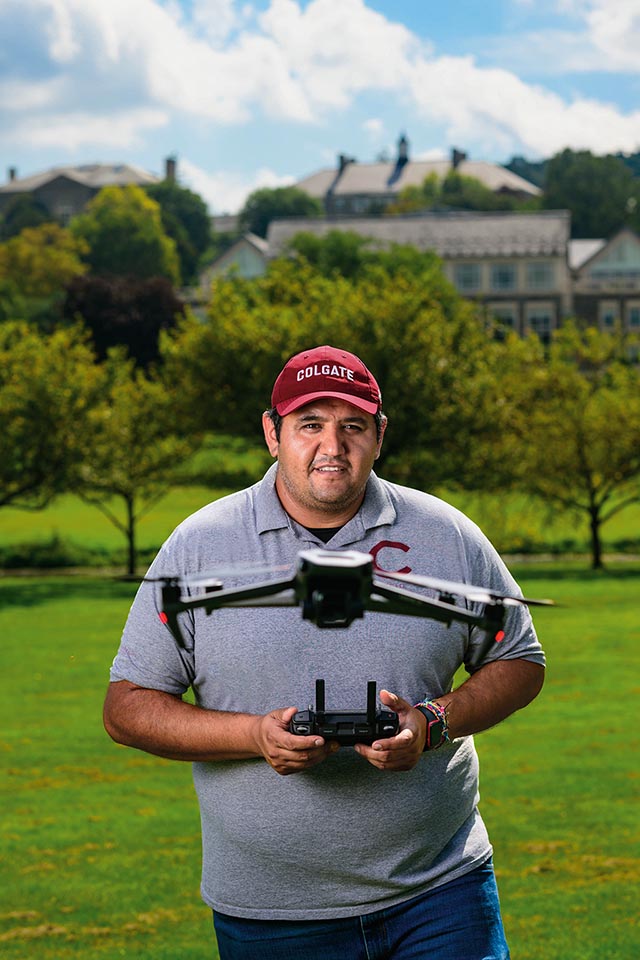
It’s no surprise that Colgate University hires IT experts, not to mention groundskeepers, campus safety officers, accountants, writers, and student life professionals. But general titles can obscure some of the remarkable duties that employees take on, if and when needed, because they work in a community that exists to discover and share knowledge.
Colgate Magazine interrupted several of these staff members to speak with them about what they do and how they came to be doing it.
‘Yes, and…’
Khazaee arrived in Hamilton, N.Y., from Texas in 2001 as a first-year student, figuring that, if he was ever going to explore outside of the American Southwest, his college years would be the best time to do it. He began his first week with the Office of Undergraduate Studies (OUS) summer program but then overheard professors talking about a vacancy in the Science and Math Initiative. He volunteered to switch over. “In that program, you came in with your OUS class, but you had to do some research in your second year,” he explains. When he was warned that the program was rigorous, his response was “Whatever. I got it.”
That’s been his M.O. ever since.
After earning his math degree, he took a job in Colgate’s Information Technology (IT) Services, managing computer labs — his first day was during his own senior week — and worked his way up through the ranks. His current title is an unusual one in higher education IT, but it reflects two key aspects of his work: whether he is engaging professors, staffers, or students, “part of it is deciphering what it is that they want; part of it is production,” he says.
He listens. He comes to understand the base requirements. He uses his own expertise to see the greater potential, and then he applies some signature energy to complete the task. The recent drone flight across the inlets of Maine is a case in point. It all started with a conversation about data storage and how to manage the information that Ingram and her research partners were acquiring in their study of facial recognition that documents seal migration behavior. (See Colgate Magazine summer 2022.)
Initially, the researchers sat in a boat, maintaining the requisite distance from seal gathering points regardless of the currents. Khazaee pointed out that his drone could hold precise positions on its own, and its missions could be automated. What’s more, it could be equipped with infrared (IR) technology to take the same pictures at night. He also knew that he could purchase and modify a drone that would maneuver underwater, allowing Ingram to collect water samples and study DNA markers without disturbing the seals.
“I don’t tend to shy away from complex problems,” he says. “You have success with a difficult one, and you know that, soon after, a slightly harder one will probably show up.”
The summertime trip northeast from Hamilton allowed Khazaee and Ingram to test the technology that they had been developing throughout the 2022–23 academic year. Initial flights were successful, and permits to move forward are pending.
“Someone asked me what I would do if I won the lottery,” Khazaee says. “I would be a perpetual student. And these opportunities, these questions that come up, afford a moment to dive into something new, with enthusiasm and the pressure of a deadline.”
— Mark Walden
The Optimist/Pessimist
There’s a menu of acronyms to know when working in any role at a university. For Mary Williams ’08, director of environmental health and safety, her daily diet is an alphabet soup.
“We’re like an internal OSHA, EPA — all of those regulatory agencies,” Williams says of her department. “We’re the ones making sure everything’s in order and that we’re meeting at least the minimum of the legal and regulatory requirements from the federal government, the state, and the county.”
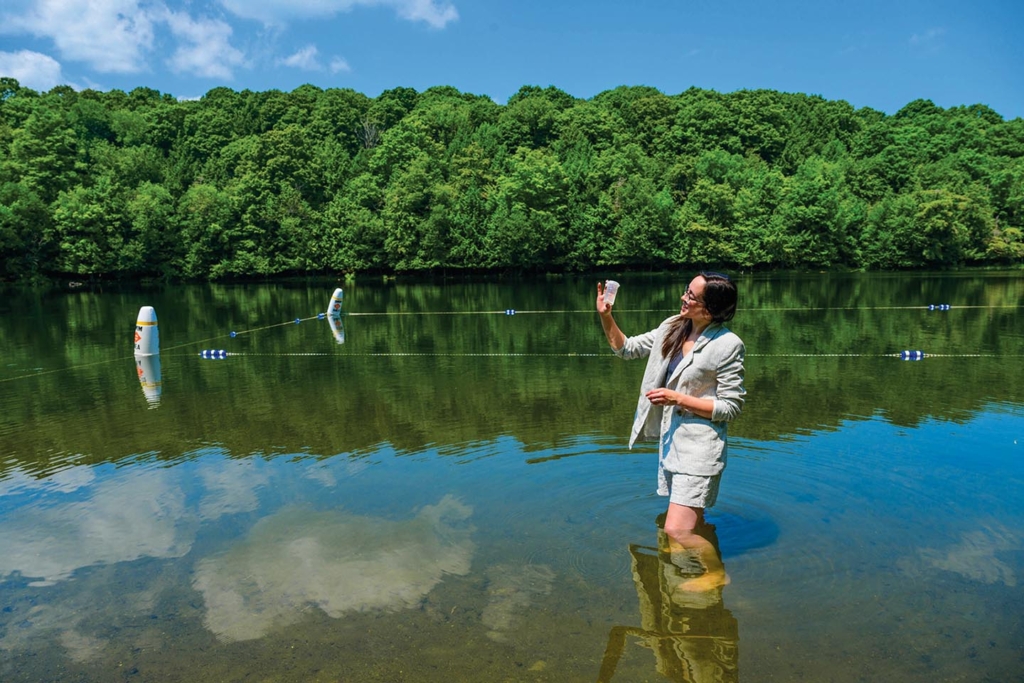
Williams’ responsibilities range from checking the water quality at the Bewkes Center lake to approving drone flight plans that enter campus air space to dealing with hazardous waste from the natural science labs.
“A lot of what we do is think about what could go wrong,” she says.
That’s a huge part of her work related to emergency response, and another acronym: the EOC, aka, the Emergency Operations Center. Williams is often section chief (and twice has filled in to lead the entire group) for the EOC, which regularly does crisis training and handles University emergencies.
A biology major, Williams intended to be a veterinarian. After graduation, she worked part time on campus as a psychology animal lab assistant for two years before becoming a biology technician. When the Office of Environmental Health and Safety added a third position to their department, they recruited her over.
Today, she describes herself as both an optimist and a pessimist: “I have to hope that people are going to do the right thing, but I also have to plan for people not doing the right thing.”
When asked how she stays on top of all the new and revised regulations she needs to know, Williams says LISTSERVs help. She adds, “There’s always more to learn. It’s job security.”
The most influential parts of her student experience, Williams says, were the Manchester Study Group with Paul Pinet, professor of geology and environmental studies (now emeritus), as well as Outdoor Education’s Wilderness Adventure. “I recommend studying abroad for every student at Colgate, and the pre-orientation programs.”
— Aleta Mayne
Some Like It Hot
Mild, medium, and spicy. Those are the classifications that Outdoor Education (OE) leaders use to describe the difficulty of their trips. Director Heidi Riley likes to turn up the heat.
“My greatest joy is coming up with adventures that are unlikely,” she says. “A combination of activities, or taking unlikely locations or routes, is so fun.”
Last year, she hatched a plan to test out one of these combo trips. She and a student leader loaded packs with blow-up kayaks, paddles, and wet suits and biked to Beaver Creek. At the state forest, they hiked down to the creek and dismantled their bikes, with the intention of paddling downstream with their bikes on the rafts. “But we ran into too much alder trying to get to the creek, it was sunset, and we totally got shut down,” she remembers, laughing. So the two trekked out of the woods, reassembled their bikes, and rode back to campus.
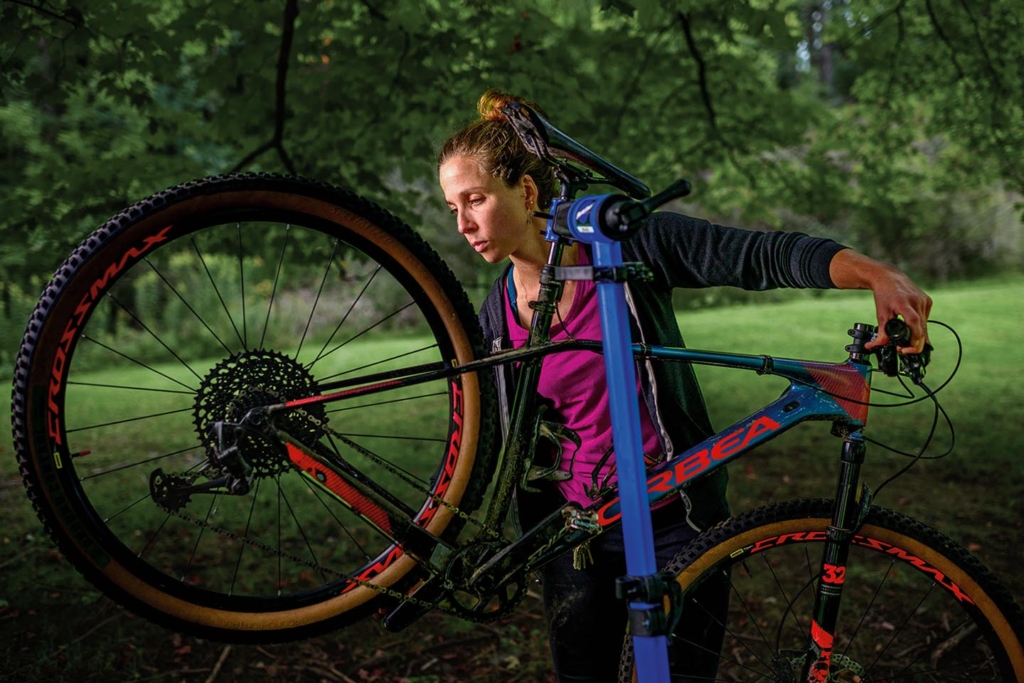
Riley went into it with the attitude of “This might not work out, but it’s safe, and attempting something with an uncertain outcome every now and then is worthwhile.” (Although that test expedition didn’t work out, subsequent attempts at other locations have.)
Having an upbeat and flexible mindset — and helping others to do the same — is a job requirement in her line of work. Riley takes it to the next level: Her master’s degree in Christian theology has trained her in pastoral care, or facilitated meaning making. “When outdoor education is doing its job well, it helps people identify what matters to them and how they nurture that,” says Riley, whose undergraduate degree is in natural resource management. “Sometimes [what matters to people] is about being outside, sometimes it’s about the environment, sometimes it’s about the skill in your body, and sometimes it’s about how you relate to other people.”
As director, Riley oversees all of the OE programming, the biggest of which is the pre-orientation wilderness adventure. She and her staff spend the summer months planning these six-day trips; this year there were 21 options, from canoeing on Long Lake (mild) to hiking several Adirondacks high peaks (spicy).
Another significant part of Riley’s job is staff training for 15–18 students, 10–20 hours per week during the academic year. Students learn how to lead trips, facilitate team-building strategies, handle interpersonal conflict, and make risk-management decisions, both in terms of group development and environmental decision-making.
“The staff training component we have is unique” compared with other universities, Riley says. “Anybody else who would have the length of staff training that we have is also a degree-granting program.” Additionally, Colgate’s OE program is special because of the leadership skills student staffers learn “that have tons of transference,” as well as the technical skills taught.
Riley herself learned a new skill — ice climbing — when she came to central New York after growing up in Florida and attending college at Texas A&M. “This is totally different from anything I’ve been around,” she says. “Ice climbing’s the best. The aesthetics are really interesting. And the route finding and assessing the environment to make micro decisions is very engaging. You can’t think about anything else while you’re doing it, which is a rare opportunity these days.”
— Aleta Mayne
Mentoring Star Students
Joe Eakin tends to think big. As technical director and designer for the Ho Tung Visualization Lab, Eakin not only shares his passion for astronomy with Colgate students, but also with the greater community. Since 2008, the outreach program he created has helped prepare science educators and exposed thousands of local elementary school kids to the basics of physics through hands-on projects at the planetarium.
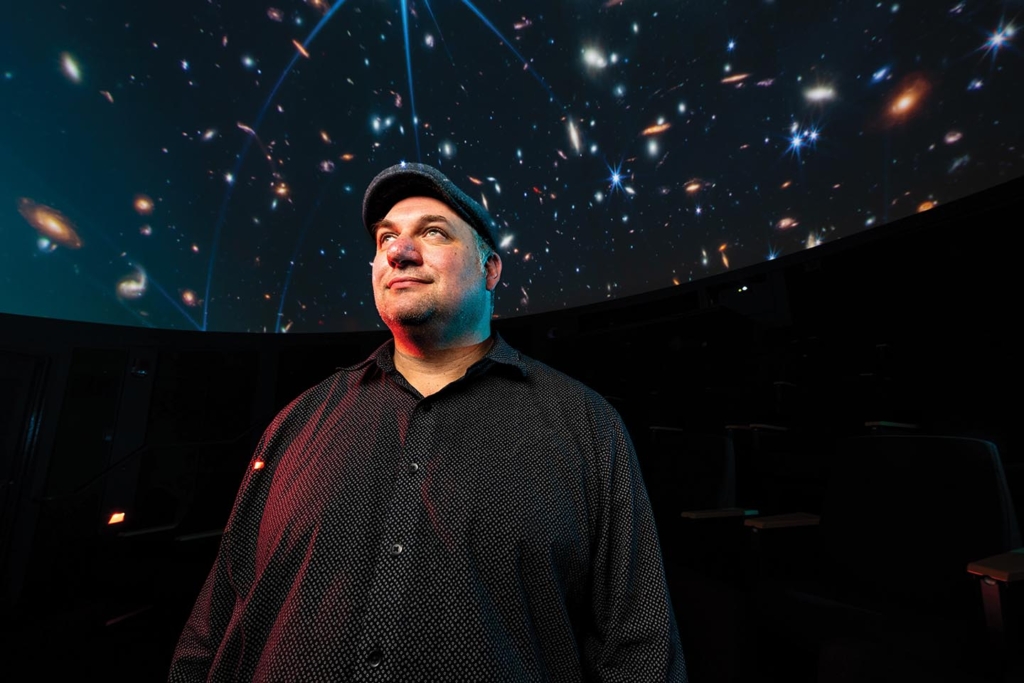
But Eakin’s latest project combines astronomy with another of his passions: video games. Inspired by the course Astronomy and Culture, Eakin conceptualized a video game based on the Mayan ball court — a brutal, ancient ball game that dates back to 1600 BCE. Astronomy and Culture was taught by Tony Aveni, the Russell Colgate Distinguished University Professor of astronomy and anthropology and Native American studies emeritus, who was one of Eakin’s first mentors and collaborators when he arrived at Colgate.
“[Mayan ball court] was bigger than soccer is today,” Eakin explains.
The idea is simple: players on two opposing teams must use their bodies — no hands allowed — to propel a rubber ball through a stone hoop. The game wasn’t just a recreational activity, but also held religious and political significance in Mayan culture (and often involved human sacrifices).
“The Aztecs and Mayans believed the ball court represented the heavens, the ball was the sun, and the game was a battle between day and night,” Eakin says. “I thought it would be interesting to work with students to create a video game version we could play in the planetarium.”
For Colgate students and other local college students interested in video games, it wasn’t a hard sell. In 2022, Eakin put together a team of eager computer science, film, engineering, and music majors to learn the development software and start creating an alpha version of the game, dubbed “Huetzi,” the Mayan verb meaning “to fall.” The project required as much ancient research as tech savvy: The game is set in Chichén Itzá, and students designed avatars depicting the helmets, pads, and thick belts players wore to launch the ball with their hips. Associate Professor of Anthropology Santiago Juarez served as a consultant to help students refine the details.
“We’re making this as historically accurate as possible,” Eakin says, “and it’s cool because the students have essentially created their own universe inside the game.”
While the group is still making some finishing touches, the game is playable, and in late August, Eakin shared the project at the Digistar Users Group Conference in Glassboro, N.J. Eakin and the students’ eventual goal: To share the game with planetariums around the country and allow players in different domes to virtually compete.
But, just like Eakin’s other projects at Colgate, the game’s main objective is to inspire students’ passion for astronomy.
“I want them to feel a sense of pride and ownership with the projects we do here,” he says, “because the planetarium is really the students’ space.”
— Mary Donofrio
First Things First
Navigating college is especially challenging for those without a family member who can share personal insight on the workings of higher education. For students who will be the first in their families to obtain a four-year degree, First@Colgate fills that gap.
As a first-generation graduate herself (at Duke University), RaJhai Spencer, the Giovanni ’94 and Maree Cutaia Director of First@Colgate, can say, “I understand what you are going through.” She, Assistant Director Tabisha Raymond, and their student staff members support first-gen students through their educational journeys.
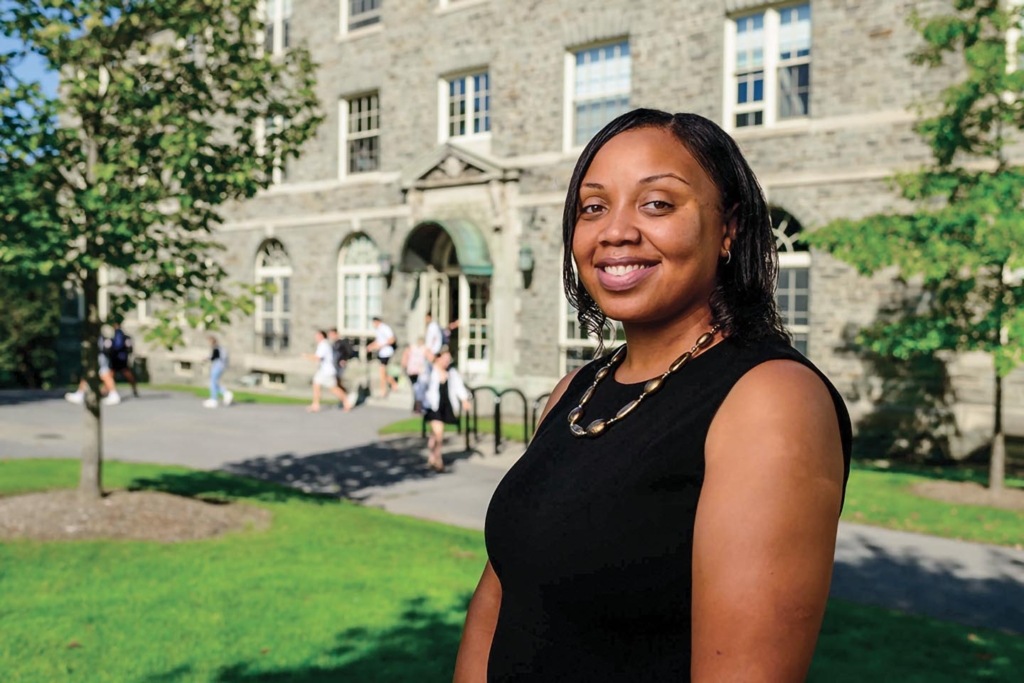
RaJhai Spencer is the Giovanni ’94 and Maree Cutaia Director of First@Colgate.
The first-gen experience is not siloed, Spencer points out: they live in the residence halls, eat on campus, and go to class with everyone else. The program gets them connected and normalizes what they are going through. “It’s letting them know what resources are available. It’s setting up regular check-ins to help them keep on pace,” she says. “It’s people who share similar experiences, befriend them, and help them navigate.”
Spencer loves seeing students build confidence in navigating academic matters and getting out of their comfort zones socially.
Spencer, who also advises more than 300 students as an administrative dean, became First@Colgate’s inaugural director in fall 2020. She came to Colgate following six years with Florida State University’s first-gen department, initially as a college life coach and ultimately as senior associate director. She also brought a unique set of earlier education roles.
“I graduated from college a year early and had no idea what I wanted to do,” Spencer says. “I went home, lived with my grandfather, and became a substitute teacher at my high school.” She also worked in Duke’s Talent Identification Program for middle and high school students; as a graduate teaching assistant while earning her MA in sociology from the University of Illinois-Chicago; and as an American English language coach. Her entrance to higher education followed her marriage — to Dorsey Spencer, now Colgate’s dean of students — when the couple lived in Nigeria. “Dorsey was the director of student activities at the American University of Nigeria; I was an academic adviser.”
Her background helped RaJhai to think about how First@Colgate can best support first-gen students. Everything is optional. The pre-orientation gives incoming students a head start in getting acquainted with campus. Throughout the four years, social, academic, and professional development offerings include group study nights and workshops with Career Services; Center for Learning, Teaching, and Research; and other departments. Alumni (often first-gen themselves) sometimes reach out to offer programs, Zoom calls, or to connect with students one on one. Last year, participants had lunch with and networked with the Alumni Council.
Trips offer recreation or professional development off campus. Last year, First@Colgate took students to Chittenango Falls and to Boston to explore graduate school opportunities, among others.
RaJhai loves seeing students build confidence in navigating academic matters and getting out of their comfort zones socially. “They are talented. Open to learning and new experiences. Thinking deeply about their education and how it impacts their families. Brave,” she says.
“We want to make Colgate a place that is welcoming and inclusive, and what we do with First@Colgate is directly tied into that. We are laying the foundation for a next generation of leaders.”
— Rebecca Downing
Leading the Steam Team
Heating Plant Foreman Paul DuVall knows what it takes to keep Colgate running — snow, sleet, or shine. “I’ve been working with boilers for 30 years,” he says. “I like the challenges we have every day.” DuVall, a Sherburne, N.Y., native, gained his first experience working with oil boilers at a plant in Norwich. He began at Colgate 14 years ago as a boiler operator and never looked back.
Being a boiler operator is demanding and precise work. The hours can be intense, especially if there is an equipment breakdown. When the entire campus depends on the successful operations of the heating plant, you need the right person for the job. DuVall is supported by his award-winning team of boiler operators (the heating plant team won the Team Excellence staff award in spring 2022). “Everybody in the heating plant wants to do their best for Colgate. It takes all of us, when the need is great; everyone steps up to support each other.”
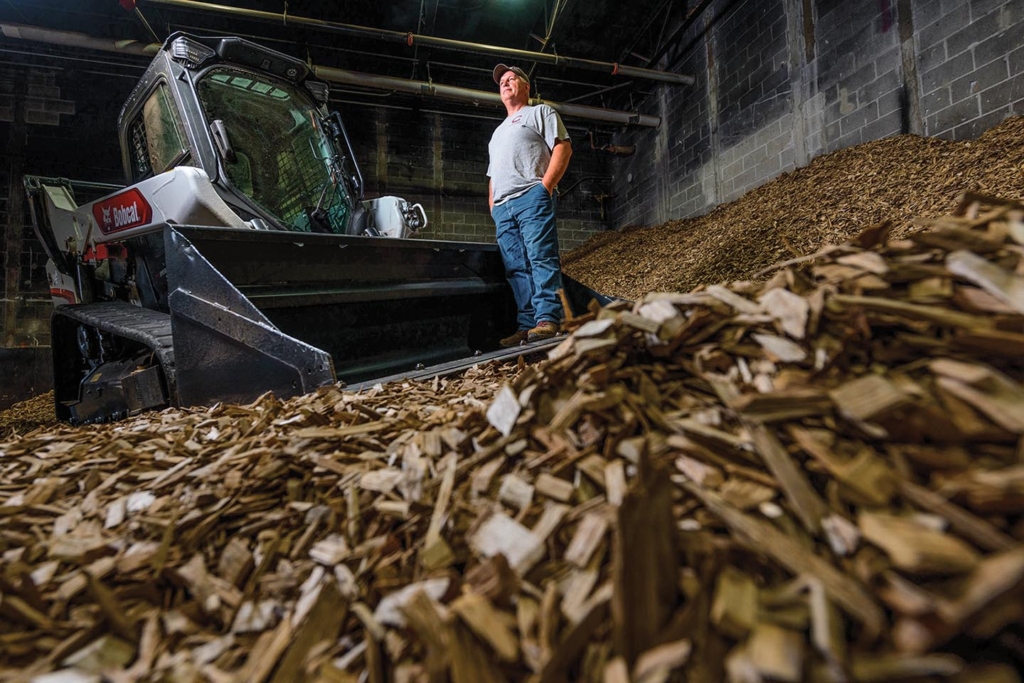
The heating plant needs constant supervision, so members of the boiler operator team must be on premise at all times, including holidays. During the COVID-19 shutdown, they were some of the only people on campus. “We felt very isolated,” says DuVall, “but we have a phenomenal crew, and we all leaned on each other.”
Most of the water used by the boilers is reused. After the steam is sent out to the buildings on campus, it returns as condensate, which is processed, cleaned, and then reheated to make steam again.
When an emergency threatens the boiler operations, DuVall and his team step in to do whatever is necessary to keep the steam running. In December 2022, a water main on Broad Street broke, and water stopped running to the heating plant. Most of the water used by the boilers is reused. After the steam is sent out to the buildings on campus, it returns as condensate, which is processed, cleaned, and then reheated to make steam again. But the condensate isn’t enough to keep the boilers running in the winter time. “Without makeup water, the boiler would go dry and the whole campus would have no heat,” says DuVall. “We got the fire trucks here, and ran a fire hose down the floor and dropped it in the condensate tank.”
He notes that the frightening part was knowing that if the fire trucks were called out on an emergency, they would have to leave. DuVall worked with other facilities crew members to ensure that in the event of another water main break, heating plant employees can draw on water from one of the other buildings up the hill on a different line. “You need to make sure you have more than one game plan,” he says.
DuVall believes in his work and in supporting his team. “When your job is better, your attitude is better,” he says. “Life’s short, so you should enjoy coming to work and you should enjoy what you do.”
→ In the winter, the heating plant needs a dozen 30-ton loads of wood chips per week to feed the boilers.
→ The cost is $1,200 per load, which works out to approximately $60,000 a month to keep the campus running. But that’s about half of what it would cost to heat the campus with gas.
→ The wood chips Colgate uses are sourced locally from scraps produced by Gutchess Lumber and are a renewable resource.
→ Colgate is able to reuse 93% of the plant’s water.
— Jasmine Kellogg
